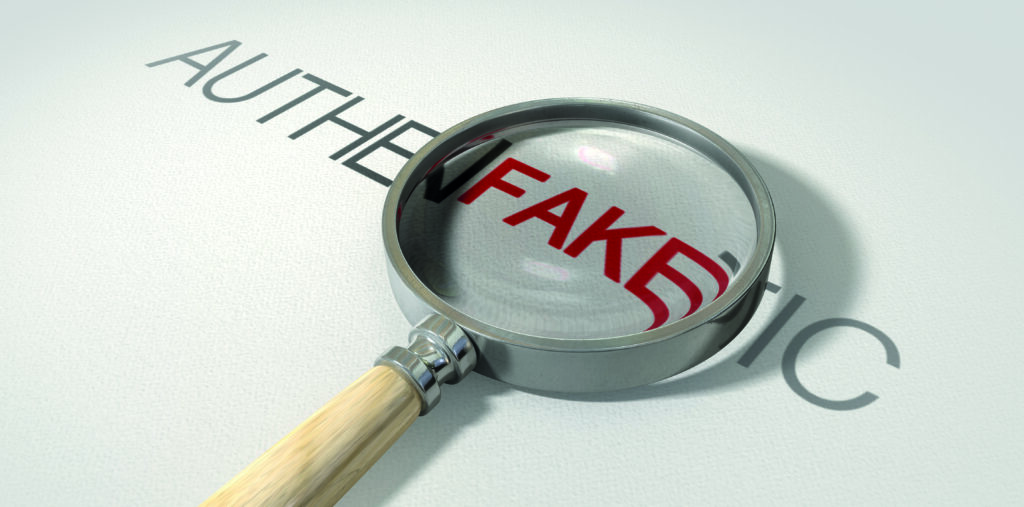ECIA’s Robin Gray explains how blanks, clones and remanufacturing introduce risk into purchasers’ electronic component supply chains
When electronic component shortages prevent manufacturers from meeting their customers’ needs, the temptation to buy components from unauthorized channels increases exponentially. We are currently in such a crisis. Furthermore, the component counterfeiting landscape has changed. Anti-counterfeiting efforts by ECIA, the industry, government and customers has forced counterfeiters and unauthorized sellers to grow ever more sophisticated in production and marketing. Clones, blanks and remanufacturing are some of the forgers’ new tools. Counterfeiting is no longer the province of small-time operators that pry parts off of boards and remark them as new and/or upgraded.
When counterfeiting of electronic components first emerged, ECIA, SIA and other industry trade associations responded with efforts to alert customers and government to the emerging dangers of fake parts. This effort eventually resulted in legislation, regulation and industry standards and guidelines. As the industry and customers changed, so did the counterfeiters. Counterfeiting evolved into sophisticated businesses using new techniques and manufacturing processes to circumvent laws and standards.
One of these techniques is manufacturing blanks. Blanks imitate genuine product in appearance and alleged functionality but have no identifying marks such as company trademarks or logos on the parts and packing material. Trademarks/logos are added after the part enters the country, thereby avoiding customs and the first line of defense.

A second emerging technique is manufacturing clones. Counterfeiters with sufficient resources can often make components that may appear to be genuine upon visual inspection and may even pass basic laboratory testing. Only very sophisticated testing is able to spot clones. Such testing may be beyond the means of buyers and testing labs. The problem is further compounded by counterfeit semiconductor components that may be tainted with malware.
There is also growing concern about the remanufacturing of genuine parts. In this instance, counterfeiters take a used part and remanufacture/restore/refurbish it. If this remanufacturing of a used component is disclosed to the buyer, then there is no problem from a legal perspective. However, if such disclosure is not made, the act of selling becomes fraud and not strictly counterfeiting. An interesting twist is that remanufacturers usually remove the original component manufacturer’s marks/logos and replace with their own name/logos and, in some instances, even create their own distribution network. The used part is usually sold as a replacement part for a part made with the original component manufacturer (OCM) and with the claim that it meets the OCM’s specifications. The big unknowns with these parts, whether legitimately made or not, is quality and performance. It is a used part, so it may be difficult or impossible to determine how much the component has been degraded by prior use. Or, in the case of semiconductor components, what programming may still be embedded.
Remanufacturing should not be confused with authorized aftermarket manufacturers. Authorized aftermarket manufacturers are those companies that have been authorized by the OCM to make their components. These legitimate manufacturers often acquire the OCM’s excess inventory, manufacturing processes and equipment, product specifications, quality testing techniques and even intellectual property rights. Authorized aftermarket manufacturers either have the right to use the OCM’s marks or make the parts under their own company names.
When sourcing from unauthorized sellers, customers may rely on testing labs to determine the authenticity of the components. The cost of testing, particularly detailed and sophisticated testing, is expensive. It drives up the cost of the purchasing process and is not a guarantee that all counterfeits will be detected. Thus, the level and frequency of testing often turns on the level of risk associated with the component and its use in the final product. To reduce the risk, customers should not rely on in-house testing by unauthorized sellers, but rather select their own testing labs independent of the seller. One other factor to consider, is that labs, even the best of these facilities, are unlikely to have the OCM’s product specifications with which to make comparisons.
The Federal government, specifically the Department of Defense (DoD) and NASA, has issued several regulations seeking to reduce the risk of counterfeit electronic components entering the supply chain. The key regulation (DFARS 2014-D005) requires the DoD to buy parts that are in production or currently available in stock from the original manufacturer, their authorized suppliers or from suppliers that obtain such parts exclusively from the original manufacturer of the parts or their authorized suppliers. Authorized supplier is defined as a supplier, distributor or an aftermarket manufacturer with a contractual arrangement with the original manufacturer. The regulation also sets forth when the DoD can buy from unauthorized sources and what criteria the seller must meet.
There is growing interest in block chain as another tool to avoid counterfeit components. The potential upside is that block chain may provide a secure chain of traceability back to the OCM. The downside is that this process may increase the credibility of unauthorized sellers if they can demonstrate the genuineness of the part. While block chain may solve the traceability problem, it does not show how the product was packaged, stored or handled or whether it has been tampered with in any way.
Block chain may also fill the huge loophole in the Department of Defense’s regulation that permits contractors to buy from unauthorized sources that buy exclusively from authorized sources. This loophole would enable anyone to buy from an authorized source and resell to the DoD or DoD contractor and be treated for purposes of the law on the same level as the OCM and authorized distributors. ECIA has been opposed to this ‘exclusively buy from’ provision and continues to work for its elimination from the law.
While customers may find genuine parts from unauthorized sellers, there are still risks. These risks include product reliability (was the part properly packaged, stored and handled); repeat buys (is this a one-and-done source or is it a reliable, on-going source for that component); and support (manufacturers rarely provide support and warranty coverage for parts bought from unauthorized sources). Buying electronic components from authorized sources is the best way for a customer to reduce the risk of obtaining counterfeit parts.
www.ecianow.org

